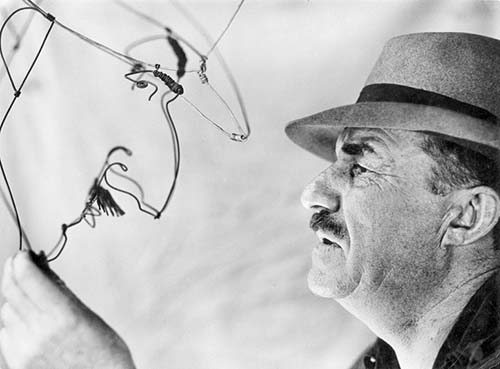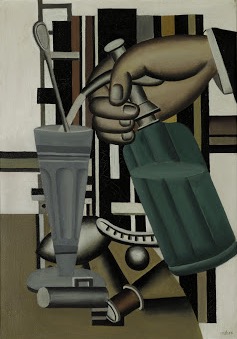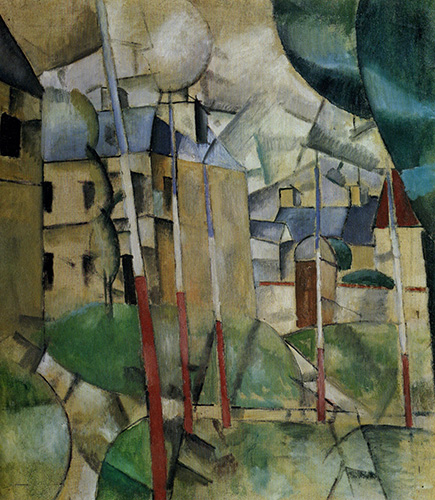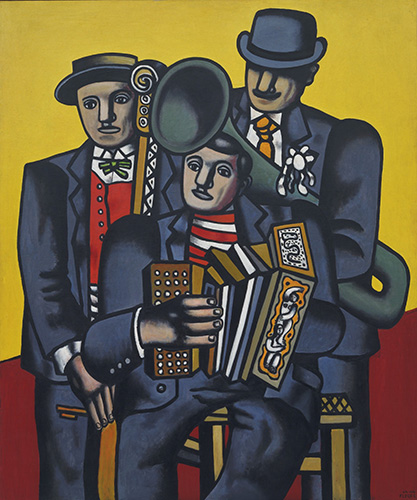
Fernand Léger - art, sculpture and filmmaking in the 20th century
ArtWizard 03.02.2020
“A Man needs colour to live. It's just as necessary an element as fire and water.”
Fernand Léger
Joseph Fernand Henri Léger was born on February 4, 1881, in Argentan, France. He was a French painter, sculptor and also filmmaker. In his early works he created a personal form of cubism, which he gradually modified into a more figurative style. His boldly simplified treatment of modern subject matter has caused him to be regarded as a forerunner of the pop art.
After apprenticing with an architect in Caen from 1897 to 1899, Léger settled in Paris in 1900 and supported himself as an architectural draftsman. He was refused entrance to the École des Beaux-Arts but nevertheless attended classes there beginning in 1903. He also studied at the Académie Julian.
Léger’s earliest-known works, which date from 1905, were primarily influenced by Impressionism. The experience of seeing the Paul Cézanne retrospective exhibition at the Salon d’Automne in 1907 and his contact with the early cubist movement as well as of Pablo Picasso and Georges Braque had an extremely significant impact on the development of his personal style. From 1911 to 1914 Léger’s work became increasingly abstract, and he started to limit his color to the primaries and black and white. In 1912 he was given his first solo show at Galerie Kahnweiler, Paris.
Léger served in the military from 1914 to 1917. His “mechanical” period, in which figures and objects are characterized by tubular, machinelike forms, began in 1917. The most significant of the said "mechanical" works, Léger painted in the 1920s. Their formal clarity as well as their subject matter, namely the mother and child, the female nude, figures in an ordered landscape, became typical of the post-war “return to order” * in the arts, and linked the artist to the tradition of French figurative painting, represented by Nicolas Poussin and Jean-Baptiste-Camille Corot.
,_1922.jpeg)
Fernand Léger, La femme et l'enfant (Mother and Child), 1922
In his Paysages animés (Animated landscapes) of 1921, figures and animals exist harmoniously in landscapes made up of streamlined forms. The frontal compositions, firm contours, and smoothly blended colors of these paintings frequently recall the works of Henri Rousseau, an artist that Léger greatly admired and whom he met in 1909.
The paysages of Léger also share traits with the work of Le Corbusier ** and Amédée Ozenfant, with whom they also founded Purism, an art movement intended as a rational, mathematically based corrective to the impulsiveness of cubism. Combining the classical with the modern, Léger's Nude on a Red Background (1927) depicts a monumental, expressionless woman, machinelike in form and color. His still life compositions from this period are dominated by stable, interlocking rectangular formations in vertical and horizontal orientation.


Fernand Léger, Femme sur fond rouge, femme assise (Nude on a Red Background), 1927
The Siphon (1924), a still life based on an advertisement in the popular press for the aperitif Campari, represents a landmark of the Purist aesthetic in Léger's work. Its balanced composition and fluted shapes suggestive of classical columns are brought together with a quasi-cinematic close-up, as a detailed shot in cinema, of a hand holding a bottle.

Fernand Léger, The Siphon, 1924
As an enthusiast of the modern, Léger was greatly attracted to cinematographic works and cinema in general and for a time he considered giving up painting for filmmaking.
In 1923–24 he designed the set for the laboratory scene in Marcel L'Herbier's L’Inhumaine (The Inhuman One) ***. In 1924, in collaboration with some other artists, Léger produced and directed the iconic Ballet Méchanique (Mechanical Ballet), inspired by Futurism. Neither abstract nor narrative, it is a series of images of a woman's lips and teeth, close-up shots of ordinary objects, and repeated images of human activities and machines in rhythmic movement.
During the same period, in collaboration with Amédée Ozenfant, Léger established the Académie Moderne, that was a free school where he taught art from the beginning of 1924. One year after, the artist produced the first of his "mural paintings", influenced by Le Corbusier's theories. Intended to be incorporated into polychrome architecture, they are among his most abstract paintings, featuring flat areas of color that appear to advance or fade.
During the same period, Léger also collaborated with the writer Blaise Cendrars on films and designed sets and costumes for performances by Rolf de Maré’s Ballets Suédois.
In 1931 Léger visited the United States for the first time. He taught art at Yale University, and found inspiration for a new series of paintings in the novel sight of industrial refuse in the landscape. The shock of juxtaposed natural forms and mechanical elements, the "tons of abandoned machines with flowers cropping up from within, and birds perching on top of them" exemplified what he called the "law of contrast".
His enthusiasm for such contrasts resulted in such works as The Tree in the Ladder (1943–44), and Romantic Landscape (1946). Reprising a composition of 1930, the artist painted Three Musicians (1944). Reminiscent of Henri Rousseau in its folk-like character, the painting exploits the law of contrasts in its juxtaposition of the three men and their instruments.

Fernand Léger, The Tree in the Ladder, 1943-44

Fernand Léger, Romantic Landscape, 1946

Fernand Léger, Three Musicians, 1924-44
During his American sojourn, Léger began making paintings in which freely arranged bands of color are juxtaposed with figures and objects outlined in black. Léger credited the neon lights of New York City as the source of this innovation: "I was struck by the neon advertisements flashing all over Broadway. You are there, you talk to someone, and all of a suddenly he turns blue. Then the color fades and another one comes and turns him red or yellow." In 1935 the Museum of Modern Art, New York, and the Art Institute of Chicago presented an exhibition of his work.
Upon his return to France in 1945, he joined the Communist Party. During this period his works became less abstract, and he produced many monumental figure compositions depicting scenes of popular life featuring acrobats, builders, divers, and country outings. Despite his communist beliefs, Léger's social conscience was not that of a fierce Marxist, but of a passionate humanist.
In the decade before his death, Léger’s wide-ranging projects included book illustrations, monumental figure paintings and murals, stained-glass windows, mosaics, polychrome ceramic sculptures, and set and costume designs. In 1955 he won the Grand Prize at the São Paulo Bienal.
Léger passed away on August 17 of that year at his home in Gif-sur-Yvette, France. The Musée Fernand Léger was inaugurated in 1960 in Biot, France.
_____
* The return to order (In French: Retour à l'ordre) was a European art movement, that followed the First World War, rejecting the extreme avant-garde in art of the years up to 1918 and returning to traditional art instead.
** Charles-Édouard Jeanneret (6 October 1887 - 27 August 1965), known as Le Corbusier, a Swiss-French architect, designer, painter, writer, and one of the pioneers of what is now called modern architecture.
*** A French science fiction drama film directed by Marcel L’Herbier, that has a subtitle histoire féerique ("fairy story", "story of enchantment"). L'Inhumaine is notable for its experimental techniques and for the collaboration of many leading practitioners in the decorative arts, architecture and music.
